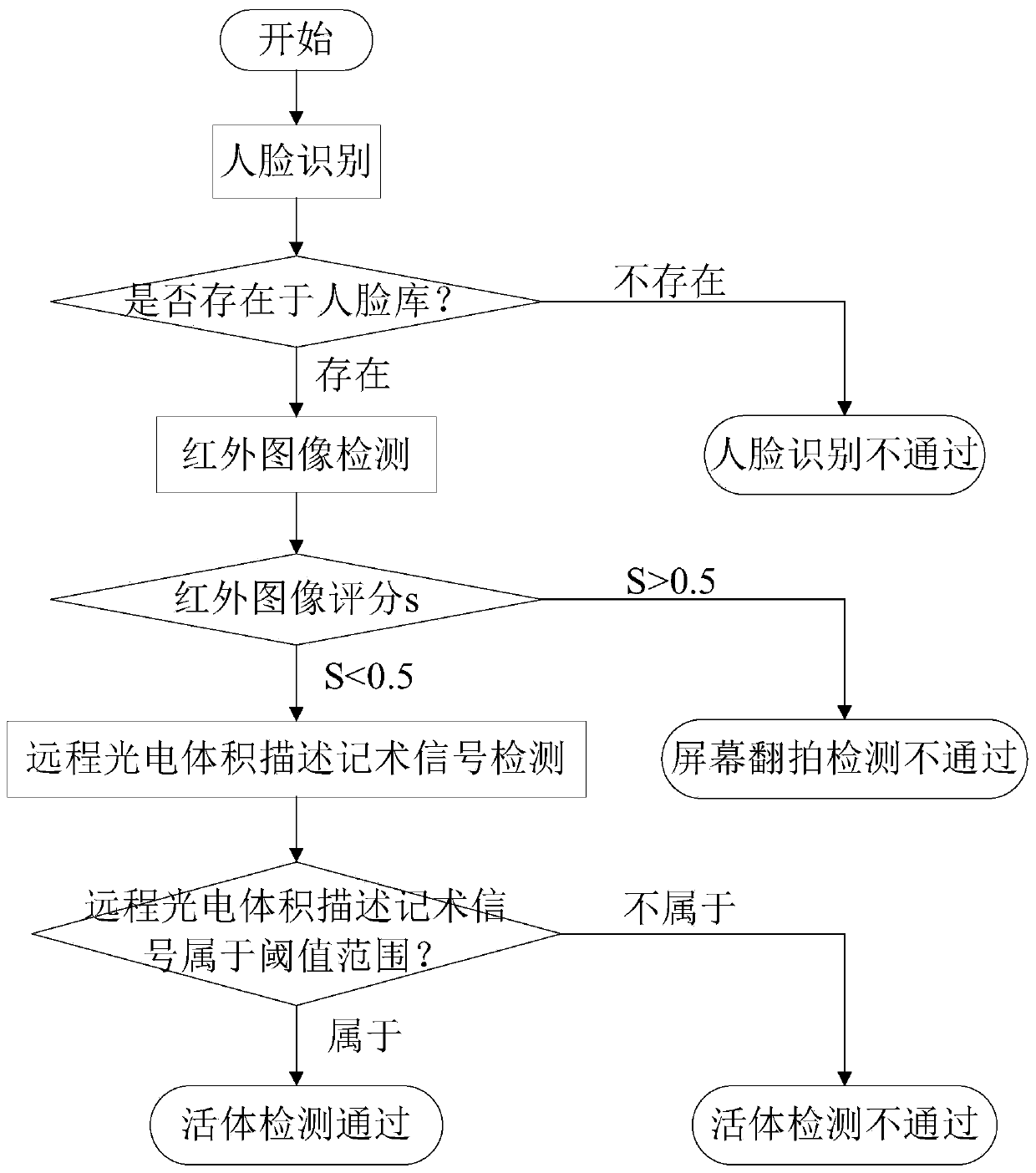Living body detection method based on near infrared and remote photoplethysmography
A technology of photoplethysmography and living body detection, which is applied in the field of face recognition, can solve the problems of wrong recognition of vital sign signals, poor detection effect, wrong recognition, etc., achieve strong classification and learning ability, high user friendliness, and improve robustness sexual effect
- Summary
- Abstract
- Description
- Claims
- Application Information
AI Technical Summary
Problems solved by technology
Method used
Image
Examples
Embodiment Construction
[0026] In order to more clearly illustrate the invention purpose, technical scheme and technical effect of the present invention, the following will be combined with the present invention. figure 1 The technical solutions in the present invention are clearly and exemplarily described in detail, and obviously, the described embodiment is a specific implementation manner of the technical solutions of the present invention, rather than including all possible implementation manners. Based on the embodiments listed in the present invention, all other embodiments obtained by those skilled in the art under the guidance of the inventive concept of the present application fall into the protection scope of the present invention.
[0027] In the description of this specification, reference to the terms "one embodiment," "some embodiments," "example," "some examples," and other schematic expressions are not necessarily referring to the same embodiment or example. Furthermore, the particul...
PUM
 Login to View More
Login to View More Abstract
Description
Claims
Application Information
 Login to View More
Login to View More - R&D
- Intellectual Property
- Life Sciences
- Materials
- Tech Scout
- Unparalleled Data Quality
- Higher Quality Content
- 60% Fewer Hallucinations
Browse by: Latest US Patents, China's latest patents, Technical Efficacy Thesaurus, Application Domain, Technology Topic, Popular Technical Reports.
© 2025 PatSnap. All rights reserved.Legal|Privacy policy|Modern Slavery Act Transparency Statement|Sitemap|About US| Contact US: help@patsnap.com



